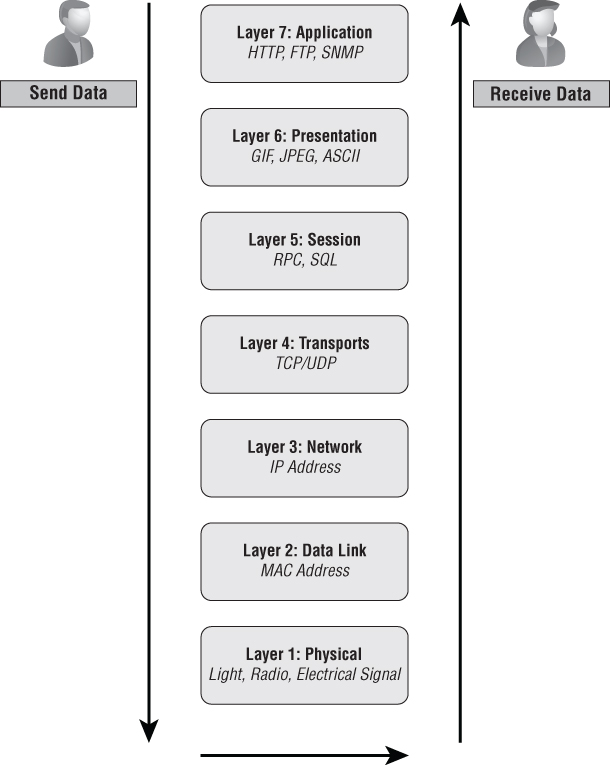OSI Model
The OSI model was created by the International Organization for Standardization (ISO) to give architects, engineers, and manufacturers a modular way to troubleshoot issues. Certain protocols work at certain layers of OSI. As illustrated in Figure 7.2, the OSI moves in both directions depending on whether someone is either sending or receiving data.

Figure 7.2: The OSI model sending and receiving data
When data is sent across a network, the information is encapsulated as it travels down the OSI layers. When the data is received, it travels up the seven layers and is demultiplexed and delivered to the end user at the upper layers. This process is often likened to using the post office. You write a letter, fold it and put it in an envelope, address it with a destination and receiving address, pay postage, and drop it off at the post office. The post office delivers it to its destination address and the intended person.
Complex problems can be more easily solved when you take...

























































